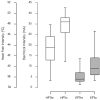Intravenous lidocaine reduces ischemic pain in healthy volunteers
- PMID: 20921835
- PMCID: PMC2951626
- DOI: 10.1097/AAP.0b013e3181d23386
Intravenous lidocaine reduces ischemic pain in healthy volunteers
Abstract
Background and objectives: Lidocaine, a local anesthetic and antiarrhythmic drug that alters depolarization in neurons by blocking the fast voltage-gated sodium (Na+) channels in the cell membrane, is used for regional anesthesia, as antiarrhythmic drug, and as analgesic for various painful conditions. It is unclear whether monotherapy with intravenous lidocaine has an analgesic effect in healthy individuals. To address this important question, we studied pain perception before, during, and after the administration of intravenous lidocaine in 16 human volunteers. Our hypothesis was that lidocaine, administered as a short intravenous infusion, does not have an analgesic effect in healthy volunteers.
Methods: Sixteen healthy human volunteers received systemic lidocaine at plasma concentration 2 mg/mL using a computer-assisted infusion. Participants underwent a series of sensory tests-thermal, electrical, and ischemic pain and normal pinprick sensation-at baseline, during, and 30 mins after administration of a 20-min lidocaine infusion at a 2 mg/mL effect site concentration.
Results: We found a sustained decrease in ischemic pain ratings and a limited analgesic effect for electrical pain, whereas thermal pain and normal sensation did not change.
Conclusions: The observed sustained analgesic effect of systemic lidocaine in the ischemic pain model suggests that lidocaine may be used to treat acute pain.
Figures




Similar articles
-
The effect of systemic lidocaine on pain and secondary hyperalgesia associated with the heat/capsaicin sensitization model in healthy volunteers.Anesth Analg. 2000 Oct;91(4):967-72. doi: 10.1097/00000539-200010000-00037. Anesth Analg. 2000. PMID: 11004058 Clinical Trial.
-
Low-dose lidocaine suppresses experimentally induced hyperalgesia in humans.Anesthesiology. 1998 Dec;89(6):1345-53. doi: 10.1097/00000542-199812000-00011. Anesthesiology. 1998. PMID: 9856708 Clinical Trial.
-
Concentration-effect relationship of intravenous lidocaine on the allodynia of complex regional pain syndrome types I and II.Anesthesiology. 2000 Jan;92(1):75-83. doi: 10.1097/00000542-200001000-00017. Anesthesiology. 2000. PMID: 10638902 Clinical Trial.
-
Local anesthetics as pain therapy in horses.Vet Clin North Am Equine Pract. 2010 Dec;26(3):533-49. doi: 10.1016/j.cveq.2010.07.004. Vet Clin North Am Equine Pract. 2010. PMID: 21056298 Review.
-
Intravenous lidocaine for neuropathic pain: diagnostic utility and therapeutic efficacy.Curr Pain Headache Rep. 2007 Feb;11(1):20-4. doi: 10.1007/s11916-007-0017-7. Curr Pain Headache Rep. 2007. PMID: 17214917 Review.
Cited by
-
Management of critical limb ischemia.Can Fam Physician. 2012 Sep;58(9):960-3. Can Fam Physician. 2012. PMID: 22972725 Free PMC article. No abstract available.
-
Lidocaine versus ropivacaine for postoperative continuous paravertebral nerve blocks in patients undergoing laparoscopic bowel surgery: a randomized, controlled, double-blinded, pilot study.Local Reg Anesth. 2015 Sep 14;8:71-7. doi: 10.2147/LRA.S84476. eCollection 2015. Local Reg Anesth. 2015. PMID: 26396544 Free PMC article.
-
Analgesic drug use in patients with STEMI: Current perspectives and challenges.Front Med (Lausanne). 2023 Mar 22;10:1148581. doi: 10.3389/fmed.2023.1148581. eCollection 2023. Front Med (Lausanne). 2023. PMID: 37035322 Free PMC article. Review.
-
Systematic review of pharmacological therapies for the management of ischaemic pain in patients with non-reconstructable critical limb ischaemia.BMJ Support Palliat Care. 2018 Dec;8(4):400-410. doi: 10.1136/bmjspcare-2017-001359. Epub 2017 Aug 23. BMJ Support Palliat Care. 2018. PMID: 28835456 Free PMC article.
References
-
- Schafranski MD, Malucelli T, Machado F, et al. Intravenous lidocaine for fibromyalgia syndrome: an open trial. Clin Rheumatol. 2009;28:853–855. - PubMed
-
- Vadalouca A, Siafaka I, Argyra E, Vrachnou E, Moka E. Therapeutic management of chronic neuropathic pain: an examination of pharmacologic treatment. Ann N Y Acad Sci. 2006;1088:164–186. - PubMed
-
- Groudine SB, Fisher HA, Kaufman RP, Jr., et al. Intravenous lidocaine speeds the return of bowel function, decreases postoperative pain, and shortens hospital stay in patients undergoing radical retropubic prostatectomy. Anesth Analg. 1998;86:235–239. - PubMed
-
- Kaba A, Laurent SR, Detroz BJ, et al. Intravenous lidocaine infusion facilitates acute rehabilitation after laparoscopic colectomy. Anesthesiology. 2007;106:11–18. discussion 15-16. - PubMed
Publication types
MeSH terms
Substances
Grants and funding
LinkOut - more resources
Full Text Sources
Medical
